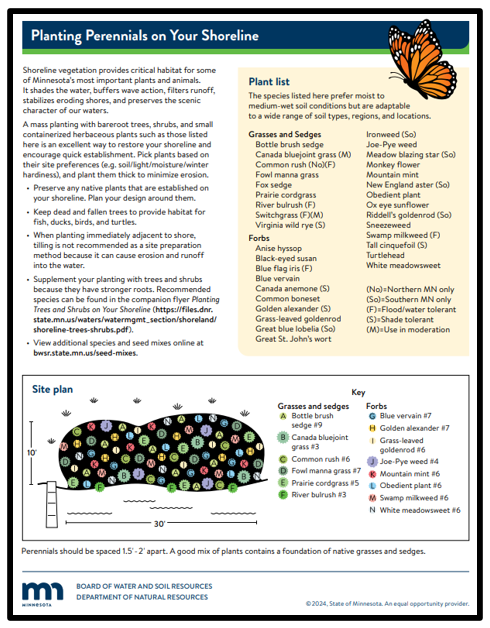
DNR continues to update and add new resources to our Natural Shorelines page. In the expandable "How can I restore my shoreline?" section, we now have two new 2-page flyers with suggested plant lists for your shoreline, one focused on trees and shrubs and the other featuring perennials.
DNR State Fair Pollinator Day
On a related note, Saturday, Aug. 31, 2024 is Pollinator Day at the DNR building and grounds at the Minnesota State Fair.
Powerful Pollinators Day will feature about 20 organizations sharing pollinator-related information and activities.
|

What federal and state grant opportunities are available for reducing flood risk? Flood reduction grant programs provide funding for pre- and post-disaster mitigation. Join us as we discuss the various grant opportunities available, eligible projects, who to contact with questions, and how to apply. This training covers federal grants such as BRIC, FMA, Swift Current, and HMGP, as well as Minnesota's state Flood Hazard Mitigation grants.
Recommended for local officials.
Presenters: Matt Bauman (DNR), Kristy Dellwo (HSEM), Meghan Cuneo (FEMA), Sarah Stucky (FEMA) and Andrew Weeldreyer (FEMA)
Registration
When: 1-2:30 p.m., Sept. 23, 2024 (Mon)
Cost: Free
|
By Sarah Stucky, FEMA
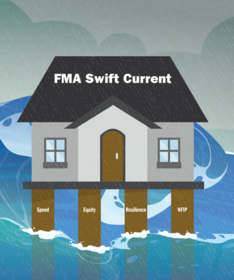
On June 1, 2024, FEMA announced the availability of $300 million to help property owners across the nation become more resilient to flooding using funds from the Infrastructure Investment and Jobs Act (IIJA) also known as the Bipartisan Infrastructure Law.
The Flood Mitigation Assistance Swift Current funding opportunity was created to reduce the damage-repair cycle of repetitively flooded or substantially damaged properties insured through the National Flood Insurance Program (NFIP) quickly and equitably after a flood disaster event.
Due to the disaster claims from the severe storms and flooding that occurred from June 16 to July 4, 2024, Minnesota qualified for $10 million in Swift Current grant funding.
|
To be eligible, buildings must:
- Be insured through the NFIP.
- Have a NFIP flood insurance history of claims and be listed a Substantially Damaged, Repetitive Loss (RL), or Severe Repetitive Loss (SRL) property.
Eligible projects
- Property acquisition and structure demolition/relocation
- Structure elevation
- Dry floodproofing of historic residential structures or non-residential structures
- Non-structural retrofitting of existing structures and facilities
- Mitigation reconstruction
- Structural retrofitting of existing structures
- Project Scoping – up to 1 percent of the total maximum set-aside
Application period open
- The application period for Minnesota:
- Opened Aug. 28, 2024.
- Closes on Dec. 13, 2024.
- The funding opportunity is available on Grants.gov.
For more information
As the earth’s largest source of fresh water, groundwater is vital. The DNR’s Groundwater Atlas Program studies its distribution, movement, conditions, and aquifer pollution sensitivity at a county level. The team then creates detailed reports, maps, and geographic information system files that support informed decisions around water supply management, sustainable use and more. This information expands on the findings of the geologic atlases produced by the Minnesota Geological Survey (MGS).
Recently, the program released the Groundwater Atlas of Hubbard County. Located in north-central Minnesota, the county lies entirely within the uppermost reaches of the greater Mississippi River watershed.
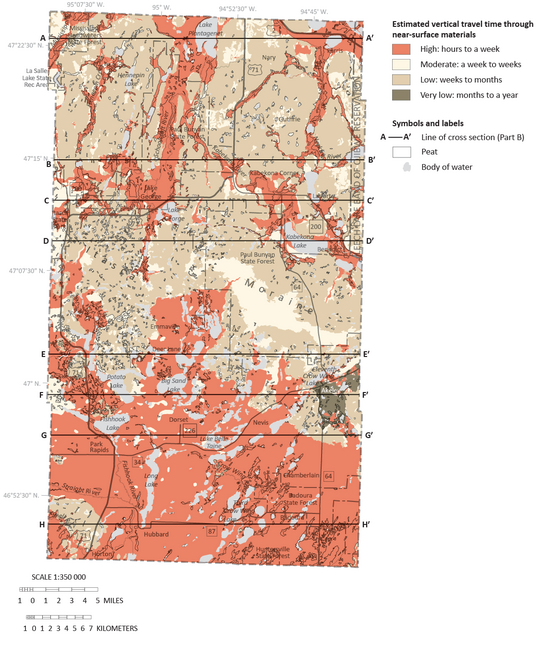 Pollution sensitivity of near-surface materials is primarily rated high in areas of sandy outwash and fluvial deposits and moderate or low in areas with sandy loam till at the surface.
Some high-level findings include:
- Hubbard County’s sandy upper aquifer system provides water for 93% of its well owners.
- Groundwater flow is typically consistent with surface-water flow from topographic highs at watershed boundaries toward streams, lakes and wetlands.
- Evidence of a connection between surface water and groundwater appeared in wells downgradient of some lakes.
- Groundwater recharged since the 1950s was found in aquifers up to 150 feet deep, indicating higher sensitivity to surface activities.
- Deeper aquifers had older water; one sample was 4,500 years old.
- While over half of 114 samples contained arsenic, only three exceeded health-based guidelines; 55 of 104 samples surpassed the level of manganese.
- In the southern half of Hubbard County, where crop cultivation is common, chloride and nitrate concentrations from human sources were primarily found in wells less than 100 feet deep. Elevated chloride also occurred near highways, potentially from road salt.
Free Workshop about Hubbard County Atlas
To help Hubbard County residents and local agencies understand the atlas and its results, DNR Hydrogeologist Nick Budde will lead a free workshop from 12:30 to 3:30 p.m. Wednesday, Sept. 11, in Park Rapids, Minnesota. The event will also be streamed. For more information or to register, contact Nick Budde by Friday, Sept. 6.
Other recent and upcoming atlases
The atlas for Wadena County was just released, and Dodge County can be expected in the coming months.
Funding for groundwater atlas efforts:

Funding for this project was provided by the Minnesota Environment and Natural Resources Trust Fund as recommended by the Legislative-Citizen Commission on Minnesota Resources (LCCMR).
The Trust Fund is a permanent fund constitutionally established by the citizens of Minnesota to assist in the protection, conservation, preservation, and enhancement of the state’s air, water, land, fish, wildlife, and other natural resources.
|
Currently 40% of net Minnesota State Lottery proceeds are dedicated to growing the Trust Fund and ensuring future benefits for Minnesota’s environment and natural resources. |
|
 |
By Salam Murtada, DNR, Floodplain Hydrologist
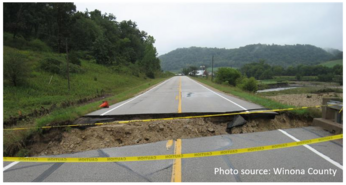
In recent years, the increasing frequency and intensity of precipitation and storms across our state have significantly impacted floodplain communities. Many areas are experiencing heightened flooding and road washouts due to improperly sized and placed culverts. These failing culverts are not just a minor inconvenience, they are straining local governments that are already grappling with limited financial and technical resources.
Consider the "Geomorphic Approach" (or "floodplain culverts")
In-kind replacement of culverts may not be the most effective solution. If you are seeing the same culverts damaged over and over again, this is an opportunity to consider upgrading your culvert designs to better withstand the current and evolving climate conditions. The new designs can mitigate future flooding risks and reduce maintenance costs in the long run.
To support these critical upgrades, we are pleased to introduce the Culvert Replacement and Incentive Program, launched in November 2023. This program is specifically designed to address the challenges faced by floodplain communities by offering financial and technical assistance.
Note: Public Assistance funds can help fund upgrades following the floodplain culvert design
If the culvert was damaged due to the recent flooding, and your community is in one of the counties with Public Assistance (PA) declaration, talk with your PA contact about the program's mitigation options (also called Section 406) that can potentially fund the additional cost to make the culvert crossing more likely to withstand future floods.
|
Geomorphic Approach ("floodplain culverts") Program Highlights:
-
Grants for Construction Costs: The program provides grants that cover up to 25% of the construction costs for new, resilient culvert installations using the Geomorphic Approach.
-
Technical Assistance: Recipients will receive expert guidance including hydraulic modeling and floodplain/FEMA evaluations. This support is crucial for implementing the Geomorphic Approach, which enhances the functionality and longevity of culverts by considering the natural processes of the waterway.
The Geomorphic Approach ensures that culverts are designed not only to manage current water flows but also to accommodate future changes in precipitation patterns. This proactive strategy helps build infrastructure that is robust and adaptable to the increasing demands of our changing climate.
By participating in the program, communities can significantly improve their infrastructure's resilience, safeguard roadways, and reduce the long-term impacts of flooding.
For more information
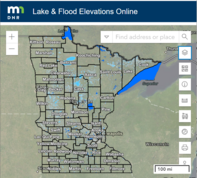 |
|
Be aware that DNR Lake & Flood Elevations Online (LFEO) is going through some transitions to improve the site long-term. The site may have temporary shut-downs and display alterations as we work to complete the changes. An updated site should be fully available in the next few weeks.
We hope to share some updated features in the next Water Talk.
|

Note: This is an update of the July 2024 Water Talk article
On June 28, 2024, President Biden declared a Public Assistance (PA) disaster for 22 Minnesota counties. On July 29, 2024, Individual Assistance (IA) was added for 19 counties. See the map below which shows counties with PA, IA, or both PA and IA declarations.
The incident period is June 16 to July 4, 2024.
Public Assistance (PA)
The PA counties include: Blue Earth, Carver, Cass, Cook, Cottonwood, Faribault, Fillmore, Freeborn, Goodhue, Jackson, Lake, Le Sueur, Murray, Nobles, Pipestone, Rice, Rock, St. Louis, Steele, Wabasha, Waseca and Watonwan.
Public Assistance (PA) involves reimbursements to local communities for costs associated with emergency response and debris removal, in addition to repairs to public infrastructure like roads, utilities, and public buildings. Minnesota's Homeland Security Emergency Management (HSEM) staff and county Emergency Managers have been working together with local officials to document damages, and FEMA staff have started to assist local governments with the recovery process.
|
 Individual Assistance (IA)
The following counties were included in the Individual Assistance (IA) declaration: Blue Earth, Cook, Cottonwood, Faribault, Freeborn, Goodhue, Itasca, Jackson, Lake, Le Sueur, Mower, Nicollet, Nobles, Rice, Rock, St. Louis, Steele, Waseca, and Watonwan.
Individual Assistance makes resources available for homes and businesses. One of the main forms of assistance is Small Business Administration (SBA) loans, but there are some grants available for limited repairs, temporary housing and related assistance. See FEMA's Individual Assistance page for more details.
FEMA will soon set up Disaster Recovery Centers (DRCs) in the declared counties where individuals can go to learn about options for assistance in one place.
The fastest way to apply is through DisasterAssistance.gov. You can also apply through the FEMA mobile app or by calling the FEMA Helpline at 800-621-3362.
Note that IA is not declared in Minnesota very often.
For more information about declarations
FEMA Region 5 staff (based in Chicago) are continuing their monthly one-hour virtual training series in 2024. They are free!
It's not too late to register for many training topics!
Upcoming "Managing your Community's Floodplain" monthly series dates and topics:

Note: All held 9-10 a.m. Central Time.
-
Sept. 25, 2024: Accessory and Agricultural Structures; Register
-
Oct. 30, 2024: Great Lakes Coastal Floodplain Management; Register
-
Nov. 27, 2024: Natural and Beneficial Functions; Register
-
Dec. 18, 2024: Community Rating System; Register
These trainings and registration links are also available on the DNR Floodplain Training and Education page.
|

Talk with FEMA and DNR Floodplain Program representatives during monthly virtual Minnesota Floodplain Management Office Hours. Hours are 10-11 a.m., typically on the fourth Thursday of the month (but a few are adjusted to avoid holidays, etc.).
Upcoming monthly hours (Note: all are 10 - 11 a.m. Central Time)
Where: Teams. No registration is required. Select a date to see a Teams meeting and join us.
These office hour dates and links are also available on the DNR Floodplain Training and Education page.
|
Important Dates to Note:
(since July 2024 Water Talk and upcoming in next couple months)
|
|
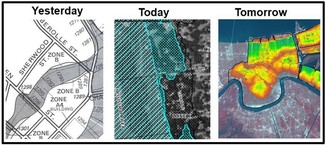 |
Preliminary Maps
None
Local Officials Meetings and Open Houses
None
90-Day Appeal Periods
- Olmsted panels (Rochester levee): June 18 to Sept. 18, 2024
Letters of Final Determination (LFDs)
- Sept. 11, 2024 - Itasca Countywide (anticipated)
- Sept. 25, 2024 - Louis Countywide (anticipated)
Effective (Six months after LFD date)
- Sept. 12, 2024 - Stevens Countywide
- Sept. 26, 2024 - Dodge Countywide
- Sept. 26, 2024 - Pope Countywide
Additional Map Update Information:
|